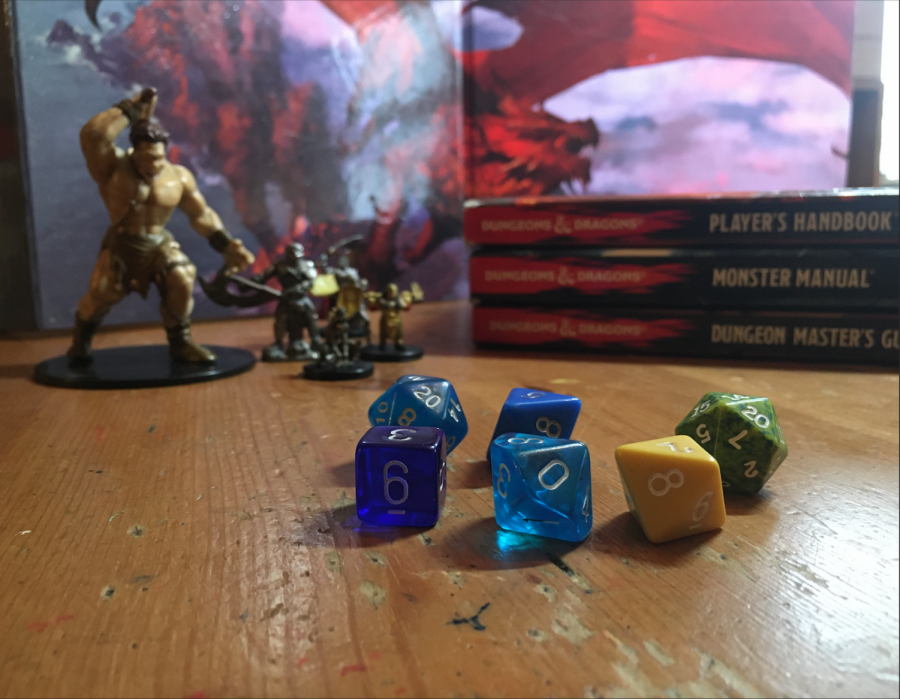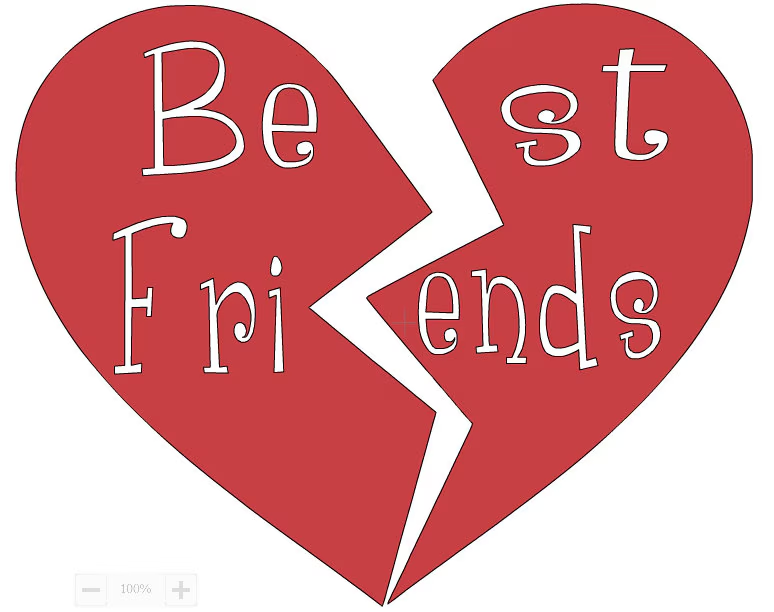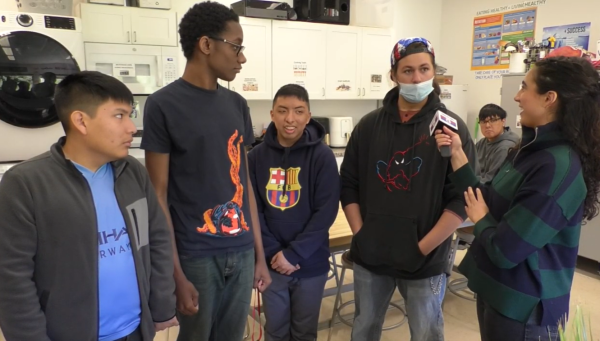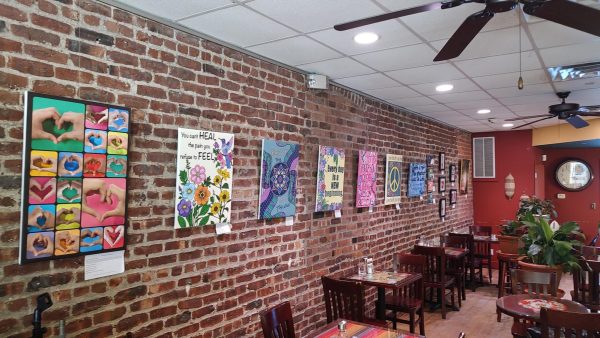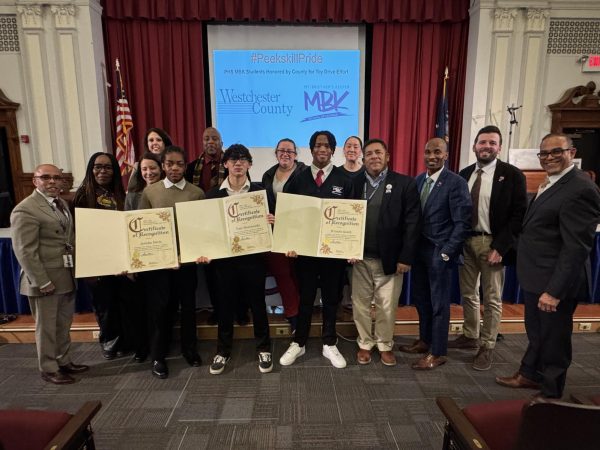The Tabletop RPG Renaissance
A group of people, of all different races and genders, sit around a table. Set up in the middle is a dry-erase mat with 1-inch tiles, with intricate, painted, plastic figurines in the shape of warriors, wizards, and various types of fantasy monsters.
“I want to attack the Beholder. I’m hiding, so my rogue gets sneak attack,” one guy there says, pointing to a figure. The figure, that of a Beholder, is a singular large orb with a massive eye in the middle. Coming out from the orb are several tendrils with eyes at the ends of them. This is the shape of one of the most powerful, scary creatures in the game. Intelligence, power-hungry and evil, with the ability to shoot beams of energy, they’ve been fighting their most challenging battle yet.
“Okay, roll,” says a woman at the head of the table, sitting behind a cardboard screen, the outward facing sides with a large, red dragon flying over mountains on it.
The guy rolls a twenty-sided die twice, looks at the highest of the two rolls, looks at his character sheet, and adds a bonus from that onto his roll. He’s rolled a 15, plus his +9 bonus.
“24 to hit,” he says.
“That hits. Roll damage.” Picking a huge amount of six-sided dice, he rolls them. Their plastic rolling sound echoes across the table. He adds that up.
“26 points of slashing damage.” He leans back. They’ve been at this for a while. The beholder is almost vanquished.
The woman behind the screen looks down at her notes, scratches something off, smiles, looks up, and says (stealing her line from a popular show of this game being played), “How do you want to do this?”
Everyone jumps up, cheering, even those who have died in battle. The rogue’s friend punches him on the shoulder. The woman behind the screen quiets them down and looks to the rogue. He describes a glorious but grisly death for the beholder at the hands of his crossbow bolt.
The woman honors that death, and the enemy they’ve had for so long has finally fallen. “That’s where we’re going to end tonight,” she says. There are groans of disappointment. “I’ll see you all next week.”
For those that play Dungeons & Dragons or any other Tabletop RPG, the scene just described is one of comfort and excitement. And for those who don’t, it may seem like too much math and too many details. But in fact, some of that is good. It gives a comprehensive ruleset, which some people need. For those who prefer fewer rules, there is also the recent surge of rules-light systems. Those are games with limited rules, examples being FATE, GUMSHOE, Savage Worlds, and Lasers & Feelings, which are more beginner friendly. I’m not going to explain their rulesets here, just give a history and discuss why Tabletop RPGs are having a resurgence.
The first tabletop roleplaying game (shortened to RPG) is also the most popular one, and likely the one that you have heard of: Dungeons & Dragons. Released in 1974 by TSR, the development of D&D and the subsequent RPGs is very interesting. Originally, the game was a more complicated miniature wargame. Wargames are strategy games where entire armies through many eras in history are controlled by one player, and they fight against other player-controlled armies, usually with a referee to settle disputes. For Dungeons & Dragons instead of controlling a whole army, it’s one character.
The idea came from the creator, Gary Gygax, in a medieval miniature wargame that he made called Chainmail, in which he had a fantasy appendix at the back. He took that idea and made Dungeons & Dragons. He used 20-sided dice (known as a d20), had a character sheet with different stats (such as Strength, Dexterity, and Intelligence), Armor Class (which is what one must roll on a d20 to score a hit), Hit Points (Health). There can be from 1 to any number of players, though the preferred number is 3 to 6 players. There is also a Dungeon Master (DM), who makes the scenario and controls the allies and enemies, usually sitting behind a screen. Dungeon Master is specific to Dungeons & Dragons, and the system-neutral term is Game Master (GM).
In 1974, after much play-testing, Gygax released a very home-made RPG under his new company TSR (Tactical Studies Rules). As the game took off, clones of the game began. Within 10 years, a whole industry, with many different types of rules systems that used 10 sided dice, 6 sided dice, and 100 sided dice (yes, those exist), across a multitude of genres. Notable examples are Call of Cthulhu, Shadowrun, Vampire: The Masquerade, Traveller and Paranoia. These early systems are known to be very complicated, yet lots of fun, because of the time spent with your friends, and the stories told.
But it didn’t come without controversy. Throughout the ‘80s, the Satanic Panic was in full rage. Stemming from a singular debunked account of a man who was in a “Satanic Cult”, many things were deemed to be Satanic plots to corrupt the country. From Metal music to even pre-schools (which were new at the time), even Dungeons & Dragons couldn’t escape. People wrongly assumed that kids (at the time the primary audience) couldn’t separate the fantasy from reality.
As Video Games became more prevalent with the advent of home consoles, tabletop RPGs in general lost popularity. It was always seen as a very nerdy thing, but now that it had been driven underground, that was only exacerbated. As the years wore on, Dungeons & Dragons went through its second, third, third and a half, and fourth edition. After the second edition, TSR went bankrupt, due to a multitude of factors. Wizards of the Coast, the creators of the fantasy card game ‘Magic: The Gathering’, purchased it in 1999, and released the third edition the following year.
Then, as 2014 rolled around, the Fifth Edition (known as 5e) came out. It embraced diversity in its art, with more people of color, and no women clad in chainmail bikinis. It also simplified the notoriously complex ruleset, whilst keeping the same rule flavor of the first and second edition of the game.
And it exploded.
Dungeons & Dragons has been having several consecutive years of growth since its Fifth Edition released, and is more popular now than it has ever been. And many have been asking, why?
There are several reasons.
The first of them is the rise of Actual-Play shows, most importantly, Critical Role. Actual Play shows are recorded sessions of people playing RPGs, much like the ever popular “Let’s Play” for Video Games. It seems like it would be boring, but when the cast has good chemistry, good roleplaying, and an intriguing story, it is fun to watch. Seeing people playing D&D has made other people want to play it, and so, they gather their friends and play it. I myself learned the basics of the rules and how fun the game is through watching an Actual-Play.
Critical Role began in 2015 as an Actual-Play hosted by the media company Geek & Sundry. The cast includes talented Voice Actors such as Travis Willingham, Laura Bailey, Marisha Ray, Taliesin Jaffe, Ashley Johnson, Liam O’ Brien, Sam Riegel, and DM Matthew Mercer. The group is on their second campaign (which is what a series of adventures with the same characters is called) right now. I personally know several people that were introduced to Dungeons & Dragons through the show. Critical Role is inarguably the most famous, but there is a runner up, which is The Adventure Zone, a podcast hosted by the McElroy family, that has even spawned comic adaptations of it.
The second reason is Netflix. Specifically, the Netflix show Stranger Things. In the first episode of the first season, the main cast is playing a game of Dungeons & Dragons in one of the character’s basement, where they fight the Demogorgon (which is originally a Dungeons & Dragons demon). This itself made people curious about the game.
The third reason is less obvious. It has to do with Video Games. Tabletop RPGs are the forbearers of the video game RPG (examples being: Final Fantasy, the Witcher, The Elder Scrolls, Fallout, World of Warcraft, Dark Souls and Mass Effect). This means more people are familiar with the concepts of Tabletop RPGs, such as stats, leveling up, and even player classes (which are like professions). Video Games are getting so immersive, but even then, there is a limit. A limit that Tabletop RPGs can break. You can play any type of game, any type of character, and unlike video games, do whatever you want to do, whether that be playing a song, fighting a dragon, or general shenanigans.
People coming to Tabletop RPGs through Video Game RPGs is interesting, as it is kind of a step down from the complexity of what they have been playing. But the fact it’s happening is good. The hobby is growing. There are even sites dedicated specifically to the sharing and purchasing of Tabletop RPGs, the prime example being DriveThruRPG. Barnes & Nobles sells RPGS. It is going mainstream.
Other RPGs, such as Call of Cthulhu (now on it’s 7th edition), Pathfinder, Savage Worlds and Vampire: The Masquerade, are growing in popularity, especially since people are wanting other things besides High Fantasy in their games. The Indie RPG scene is also growing, with new settings, new systems, and new takes on old systems driving the change of the hobby as a whole.
Dungeons & Dragons is being used by companies as a team building activity (which it very much is), and by therapists for mental therapy, or even for social skill building. I even run a club for it at the Field Library with some younger teens, but it wasn’t even my idea. I just happened to volunteer to run it whilst talking with a librarian.
With the COVID-19 Pandemic, most Tabletop Roleplaying has gone online. And the thing is, the infrastructure was already there, with sites like Roll20 or Fantasy Grounds. The only thing needed is some dice (and there are digital ones), a rulebook for whatever game you want (which can also be purchased online), and some friends, and one can play.
Dungeons & Dragons is having its moment. It is no longer played in the basement of the host’s mom’s house, but out in the open. People are thinking it is cool.
I’ll leave off with this anecdote. I have two Dungeons & Dragons shirts, one of them with the old logo on it. I wore it to school (prior to the pandemic), and someone asked: “You play Dungeons & Dragons?”
I replied: “Yes” and braced myself for teasing.
“Cool. I’ve always wanted to try it.”
The hobby is growing. Try it. It’ll open up whole new worlds of adventure.

